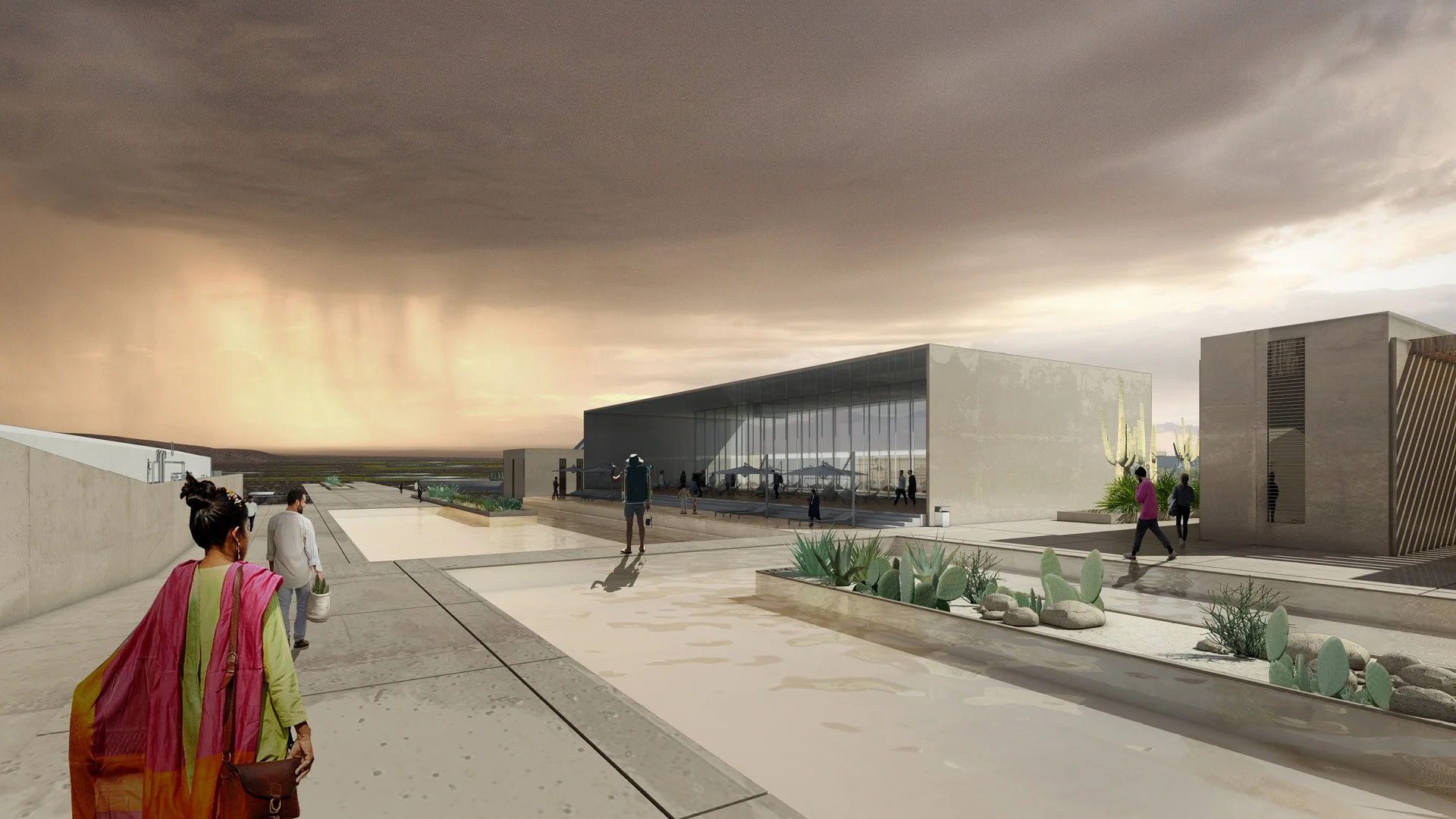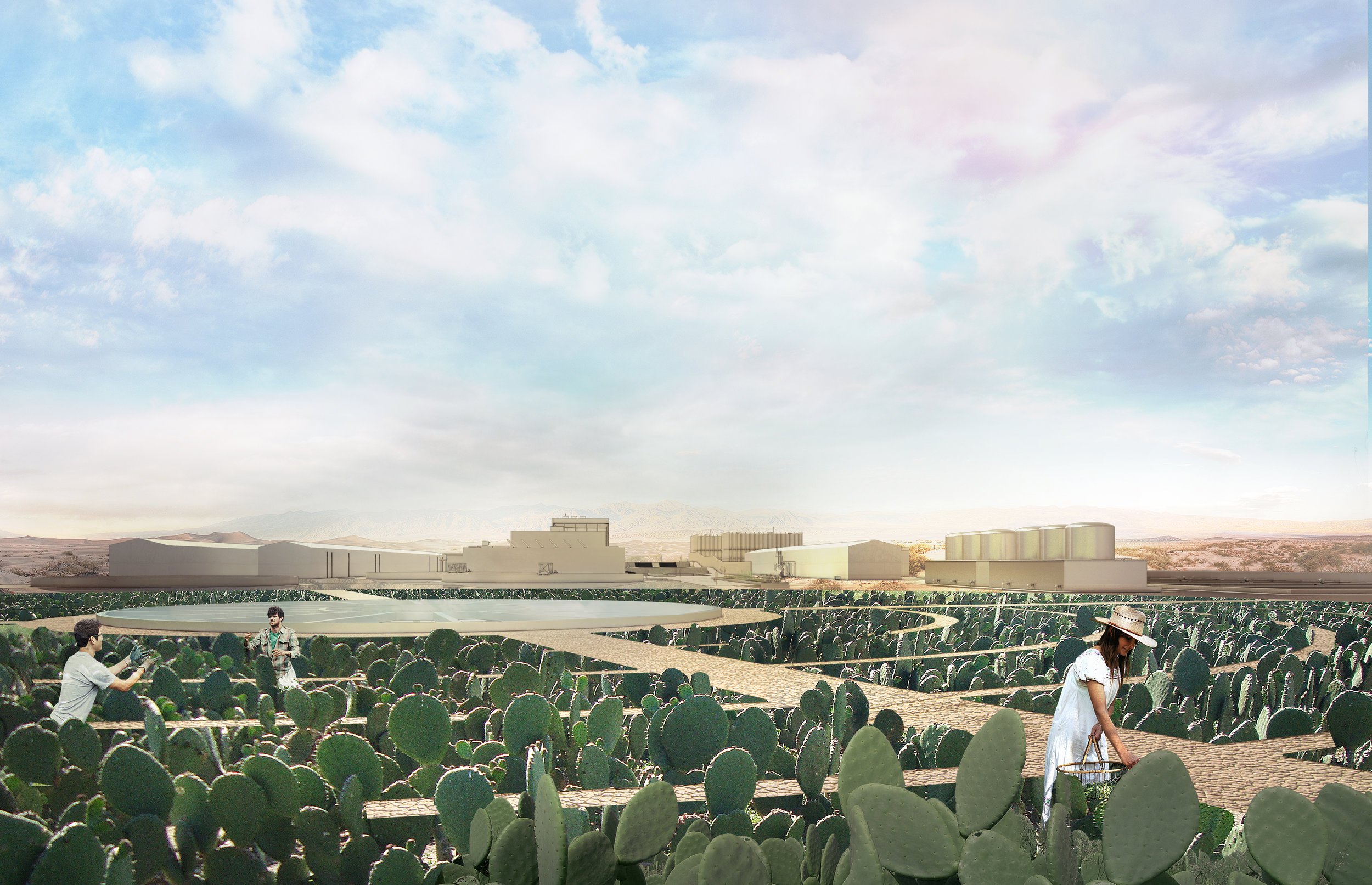Grassroots Cactivism
✸ Design Competition Entry, First Prize Winner Speculative Category in Archinect ‘Dry Futures’
Grassroots Cactivism began as the winning proposal for ‘Dry Futures,’ a design competition held by online architecture publication Archinect, which challenged designers to reimagine ways to combat drought in California and Mexico.
The proposal centers around the Nopales cactus, a drought-tolerant plant fit not only for human and animal consumption, but which can effectively clean polluted water.
Where Does all our Freshwater Go?
Globally, 70% of freshwater goes to agriculture.
By 2050, feeding a planet of 9 billion people will require an estimated 50% increase in agricultural production and a 15% increase in water withdrawals. (source: World development indicators, 2017)
We consider certain crops to be ‘thirsty’ when they require a lot of water to grow. The crop that consumes the most water in California is alfalfa, which is grown as feed for cows. Keeping cows fat consumes 2.7 trillion gallons of water a year. (takepart.com, 2015)
Around the world, an emphasis on water-intensive crops like sugarcane and rice is depleting India’s groundwater. For various reasons due to the government structure, India uses almost twice the amount of water to grow crops as compared to China and United States. (The Diplomat, 2017)
California’s unique arid and mediterranean climate plays host to a variety of indigenous species. Among these is the drought-tolerant Nopales cactus, otherwise known as the prickly pear. It has existed as a food source in local culinary traditions for many centuries, and is also commonly used as fodder for livestock in times of drought.
There is another lesser-known use of the Nopales: its pulp acts as a cleaning agent for water. Locals in Mexico often dump the water used to cook cactus into polluted rivers and streams. The ‘mucilage’ or inner cactus pulp has also been tested and used in oil spills. Cactus pulp was found to disperse crude oil efficiently at much lower concentrations than synthetic dispersants.
This project proposes to use this low-tech solution to improve and revolutionize existing wastewater management systems, as well as mitigate water usage in farming by supplying a crop that requires little to no water.
The Nopales
The Global Water Crisis
The global water crisis presents a pressing challenge with freshwater resources diminishing due to factors such as population growth, industrialization, pollution, and climate change.
According to the World Health Organization, approximately 2.2 billion people worldwide lack access to safely managed drinking water services, and the UN predicts that by 2025, nearly two-thirds of the global population could face water stress conditions. Industrial processes contribute significantly to water scarcity, with an estimated 20% of global freshwater withdrawals attributed to industrial use. Climate change exacerbates the situation, leading to unpredictable precipitation patterns and water shortages in various regions.



